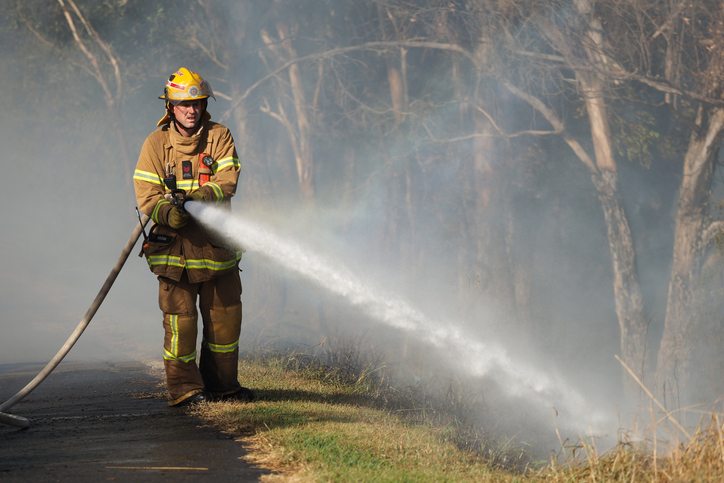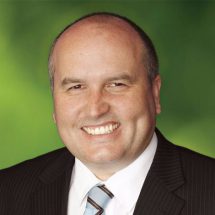
NSW councils are demanding funding to cover an extra $19 million charged to their fire and emergency services levy (ESL) and boost support for drought-stricken communities in the NSW budget.
The state government will use the ESL, which is collected from local councils and insurance companies, to net around $603 million over four years, the half-yearly budget review shows.

Following the introduction last November of laws making it easier for firefighters diagnosed with work-related cancers to get workers compensation, councils will pay 11.7 per cent of the levy from July 1– a figure which varies between different LGAs. The state government will provide 14.6 per cent and insurers will fund 73.7 per cent.
In its budget submission last week, Local Government NSW (LGNSW) said “the sudden and large increase in emergency services funding” would force many councils to cut infrastructure and service delivery.
It asks the state to cover the cost of the increase for the current financial year and to work with councils to guard against future “unnecessary shocks.”
“Local government strongly supports the need to provide better workers’ compensation coverage for firefighters,” LGNSW says.
“However, councils are deeply disappointed with the lack of consultation or advance notice, particularly at this time when budgets for the coming year are already committed. Many councils will be required to cut infrastructure and service delivery over the coming year as a result.”
Police and Emergency Services Minister said councils’ ESL contribution was part of a historical cost sharing arrangement.
“The Government will continue to support local councils. We have provided more than $9 billion to councils since 2011, to deliver and improve local infrastructure, services and facilities for their communities,” he said in a statement to Government News.
The state government will hand down the budget on May 18.
Drought funding must be ‘highest priority’
Funding to provide relief to drought-stricken communities must be another top budget priority, the submission says.
With a number of councils’ water supplies “nearly exhausted,” the submission urges the state to match the funding provided by the federalgGovernment through the Drought Communities program, which hands eligible councils up top $1 million for drought relief projects.
“LGNSW is acutely aware that the enduring drought casts a shadow over the NSW economy as it continues to devastate farms, businesses and entire communities,” LGNSW says. “The highest priority in this budget must be increased assistance to those suffering the impacts of drought.”
Even with drought-breaking rains, the state would take years to recover, the submission says.
“As the government of the area, councils play the most critical role in supporting and sustaining communities during the prolonged drought and are the key partner with the State Government in delivering assistance.”
The state government should also ensure that funding to secure local water supplies isn’t capped or limited, LGNSW argues.
Councils’ budget priorities
LGNSW’s other calls ahead of the State Budget are:
- A financial commitment to back the development of a 20-year waste strategy and improve state and regional waste infrastructure
- Reinvestment of 100 per cent of the state’s waste levy into the development of a circular economy
- A $100 million increase in the allocation of the waste levy to councils’ waste management
- Additional funding to libraries to provide a “more sustainable funding model” for the long-term
- A commitment of $100 million to roads affected by forestry
- A $1 billion investment in new open space and recreation areas
- More transparency around the allocation of Snowy Hydro funds
- Funding to the new building commission
- An end to cost shifting of roads
- Work to improve the financial independence and sustainability of councils
- More support to disadvantaged communities
- A commitment not to privatise local water utilities
- Work to address the skill shortage in local government.
Comment below to have your say on this story.
If you have a news story or tip-off, get in touch at editorial@governmentnews.com.au.
Sign up to the Government News newsletter.
The SES levy – and a succession of state government taxes – including the GST on the policy and the sales tax and the SES levy itself almost doubles the cost of insurances policies especially those for home and house contents. Only a proportion of the population pays SES levies yet all of the population has access to the fire, ambulance and other emergency services.
The SES levy should be abolished and replaced by additional taxes placed on the activities that contribute to the need for such services e.g., alcohol, nightclubs/pubs etc., higher fines for all traffic offences (including pedestrian offences), a sugar tax to help combat obesity, higher license and registration fees for P platers, on a sliding scale for motorists who have demerit points; and for motor bikes; a levy on insurance policies taken out by people who want cover for dangerous sports/activities e.g., gliding, mountain climbing, all forms of vehicle racing… and for the organisers of ‘occasions’ large groups in a contained space e.g., rave events, sports stadium events. These are paid into general revenue and the government pays the full costs of all SES.
An interesting concept Margaret and full of merit. An even better one would be to look outside the square and look at the operating costs of all emergency services such as fire-police – ambulance and SES to combine and streamline processes within. Just looking at this you have four management structures and four operating structures. Surely in this digital world we are living in we could manage the one function which is – emergency services in a better way. I would bet that if each organization got together and process map their internal operational strategies and then compared them they would find there is much they would have in common. They could then put digital strategies in place to match the things they have in common and I would bet negate the need for a SES levy through savings made in IT spend particularly and in the more efficient use of resources and staff